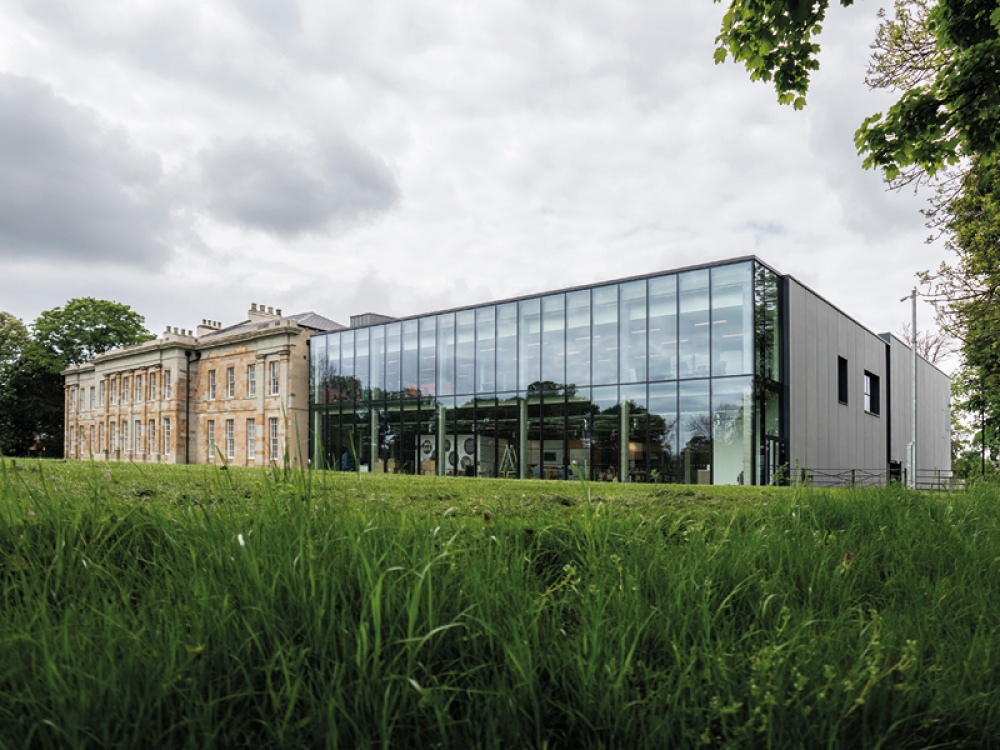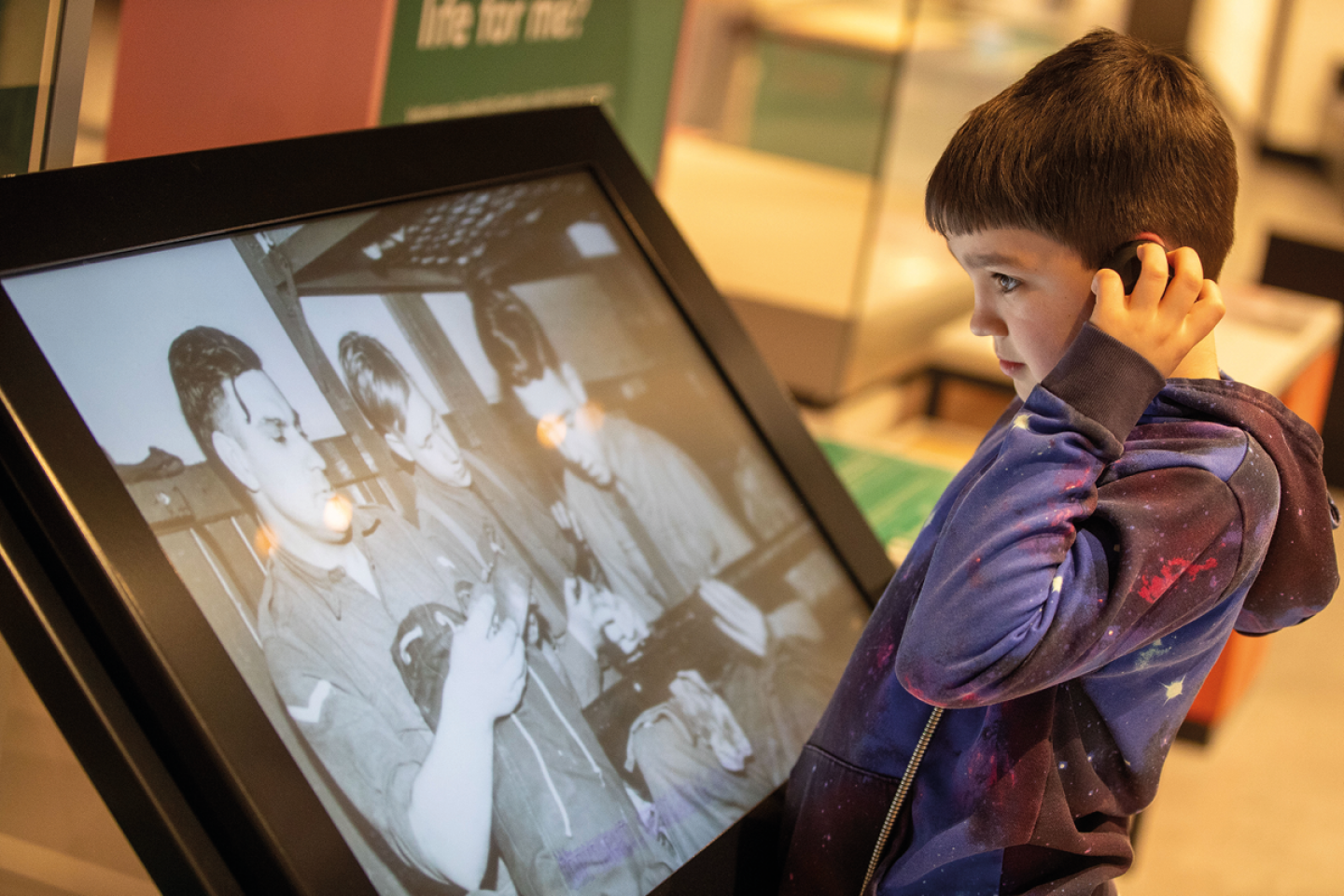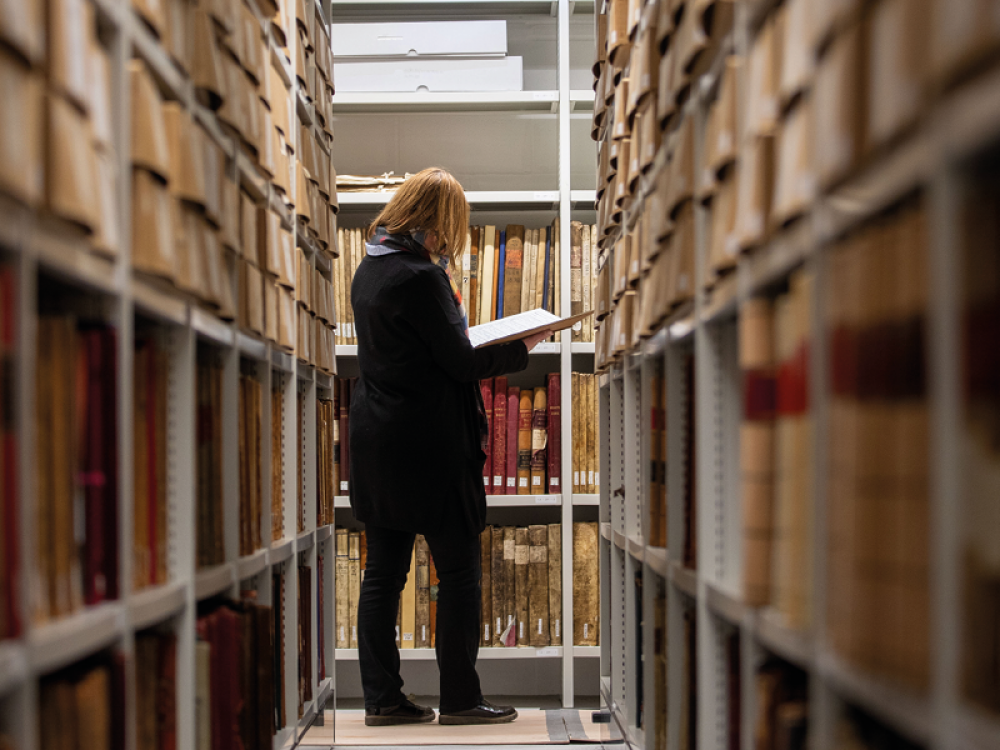Peek Inside County Durham's New Visitor Attraction

Living North take a deep dive into the past, present and future of County Durham at The Story
The Story opened its doors in the recently restored and extended Mount Oswald this summer, bringing together five important collections and six miles of archives from 900 years of local history, and the entire Durham Light Infantry (DLI) Collection.
A modern extension has been added to the manor house, and inside, visitors can experiment with audio and visual devices to interact with the exhibitions and explore state-of-the-art online collections. Heritage venues and collections manager Gillian Kirkbride is part of the team that’s helped develop and deliver this project, which stems from a need for a new home for the county’s archive service.
‘We had a look at all the different services that could help contribute to this and five services from across the council have moved into what has become The Story – that includes the records office, the registration service, it’s now the permanent home for the Durham Light Infantry Collection, it’s the home for local studies in Durham, and it’s home to the historic environment record,’ explains Gillian. ‘They’ve all come together to create this unique venue. Mount Oswald has been completely restored to its Georgian best. We have the most beautiful ceremony rooms and the new extension on the side is now home to the exhibitions, strongrooms for all the collections, and the services we run (search, conservation and digitisation) that will care for these historic records going forward.’

Gillian works with the Durham Light Infantry Collection and is keen to tell us more about the Wakenshaw Gun on display. ’It’s the biggest item on display so you can’t miss it,’ she tells us. ‘That’s our two-pounder, anti-tank gun which [Newcastle-born] Private Wakenshaw lost his life operating, and was awarded (posthumously) the Victoria Cross. It is a piece of artillery but it’s also a memorial to him and the lives that were sacrificed during the Second World War. Our medals are all available to view by appointment and a selection of them are on display in the exhibition as well.
‘The collections range from artillery and medals to a lot of personal items that tell individual stories. In the store we have things like a lock of hair and handkerchiefs. Everything at The Story tells a bigger story about the people of Durham, but there are also plenty of individual stories within that. We have items of national and international significance too. The message in a bottle is a favourite – it was thrown overboard whilst troops were travelling to France in the First World War and was only recovered 20–25 years ago. It’s a treasured piece in our collection because it was an unexpected find, and these items are still coming in so the collection will continue to grow.’
The oldest document in The Story’s archive collection is a deed which was written in Latin in around 1122. It is written on parchment made from animal skin, and in the deed Bishop Flambard of Durham grants to Papedy (his chief officer in Norhamshire and Islandshire) the town of Ancroft between Berwick and Holy Island, in return for military service at Norham Castle.
‘It’s really important to us that all our collections are engaged with,’ says Gillian. ‘That’s not happened in the same way in any of the previous iterations. Now we have this front-end exhibition which showcases all five collections, a beautiful café, and an amazing learning space to engage any groups, schools or visitors for workshops and talks. We also have search facilities which are now up-to-date for use in the future. There’s been lots of digitisation going on behind the scenes to ensure everything is accessible and the collections search is now AI generated, bringing the collections together in a way that’s never been done before. The facility works for us now, but it’s also going to work for us in the future.’

Historical re-enactments, pop-up theatre performances, live music and a teddy bears’ picnic were among the free activities taking place here when The Story opened, and both locals and visitors have been keen to see what’s inside The Story since. ‘This is how we keep history alive, how we make it relevant, how we help forge a sense of identity and how we preserve everything for the future,’ Gillian says. ‘It’s not just about putting them away in a store room, out of sight, out of mind. It’s about learning and connecting with people and understanding our heritage and who we are. By taking care of things and making them more accessible, both physically and digitally, there are always new things to learn.
‘By moving six miles of archive there are more opportunities than ever for learning more about our history and heritage and looking at things in a new way. There are records, documents and stories that we’re bringing out that haven’t been told before – hidden histories and uncovered pasts. We’re always looking to add to those as well. Our history isn’t just what’s written down and set in stone; our understanding of it is always evolving. That helps in the understanding and keeps [history] alive as well.’
The Story also provides a place for current and future generations to begin their own story, whether they’re registering a birth or getting married in one of the ceremony rooms. ‘It’ll become a place where people are making their own history too,’ Gillian says. ‘School and community groups will be able to come in and engage with the exhibition and our history through workshops and activities. We’re going to have family-fun activities in the holidays and much more going forwards in terms of talks, programmes and outreach activities. But if you want to come in just for a slice of cake that’s fine by us, but you can research the collections in our search areas as well.’

Upstairs, visitors can engage with the interactive map on the table and search the archives. ‘You can also make an appointment to see original objects and archives if you want to touch, feel and see the real thing,’ says Gillian ‘You can also search Ancestry for your own family history and request reproductions of birth, death and marriage certificates. The idea is, even if you don’t know about your history and heritage or you’ve never set foot in an archive, it doesn’t matter – this is a welcoming space for everyone to use and engage with however they like, from the die-hard researchers doing investigative work to someone who wants to dip their toe into history, or someone who wants to celebrate their wedding day in a beautiful venue.’
Gillian says there’ll always be something new to inspire you at The Story. ‘We have a temporary exhibition space within the exhibition. At the moment it’s focused on the Battle of Kohima [The Forgotten Battle], which is very much a forgotten war. That will change in October to be an exhibition curated by Durham Youth Council specifically for them to draw out stories from the collections that are relevant to them. There’s always a different story to learn and a different sense of identity.
‘With six miles of archives and thousands of Durham Light Infantry objects, I think we’re covering pretty much most of history,’ she laughs. ‘It’s a place in the Durham landscape that people can come and enjoy, and come back again and again for something different. This is a unique venue for us and the first time we’ve brought all of these collections together in one place. It’s a place we want people to come and engage with, and to discover more. We want to find a home in people’s lives as a place to visit, investigate and, most importantly for us, where people can start their own stories.’
The Story is open 9am to 5pm Monday, Tuesday, Wednesday and Friday; 9am to 7pm on Thursday; and 10am to 5pm on Saturday and Sunday. Entry is free. To find out more, visit thestorydurham.org.







